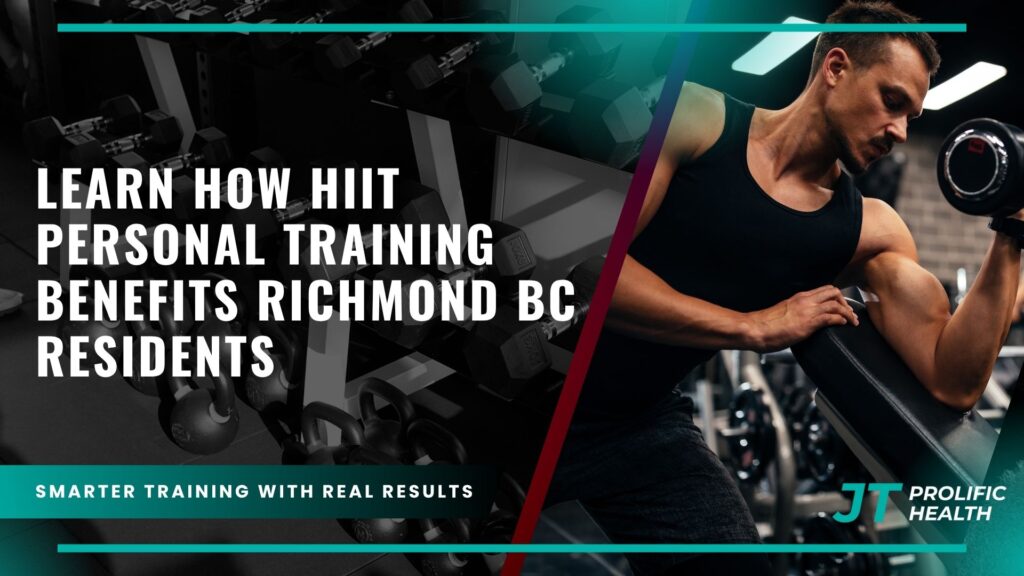Imagine achieving better fitness results in half the time you currently spend exercising. Recent studies reveal that short bursts of intense activity can improve cardiovascular health 28% faster than steady-paced workouts. This breakthrough approach helps busy individuals maximize their limited time while addressing common modern health concerns.
Residents across Metro Vancouver face unique challenges balancing work, family, and self-care. Our tailored programs adapt to these realities, focusing on sustainable progress rather than extreme measures. The method combines strategic exertion periods with active recovery, creating metabolic changes that last hours after your session ends.
Scientific research confirms this approach enhances oxygen consumption and calorie burn more effectively than traditional routines. Participants often notice improved energy levels and body composition within weeks. These sessions also help regulate blood sugar and support heart health through adaptable intensity levels.
Key Takeaways
- Time-efficient workouts match longer sessions for health improvements
- Metabolic enhancements continue post-workout
- Supports cardiovascular and blood sugar management
- Customizable intensity for individual needs
- Backed by peer-reviewed exercise science
- Designed for hectic schedules in urban environments
Understanding HIIT and Its Core Principles
Modern fitness solutions meet time constraints through strategic movement patterns. High-intensity interval training operates on alternating phases of maximum effort and active restoration. This method creates powerful physiological responses while respecting busy schedules.


Biological Responses to Intense Effort
Your body activates multiple energy pathways during short bursts of vigorous movement. Working at 85-95% of maximum heart rate triggers adaptations in cardiovascular capacity. The rapid shift between exertion and rest phases challenges both aerobic and anaerobic systems.
Proper recovery intervals allow sustained intensity throughout each session. This approach elevates oxygen consumption more effectively than steady-paced routines. Metabolic changes continue for hours post-workout, amplifying calorie expenditure.
Time-Efficient Movement Strategies
Effective sessions last 10-30 minutes through precise interval timing. Consider these adaptable elements:
- 15-30 second sprints followed by 90-second walks
- 45-second cycling bursts alternating with 2-minute easy pedaling
- 20-second jump rope intervals paired with 40-second rests
This structure prevents burnout while maintaining challenge levels. Urban professionals appreciate completing meaningful physical challenges within lunch breaks. The varied format keeps sessions engaging across different movement styles.
How HIIT Personal Training Benefits Richmond BC
Regional climate and culture shape effective workout plans for active residents. Coastal winds and rainy seasons demand adaptable fitness solutions that sync with local lifestyles. Our programs address these realities through science-backed sessions designed for West Coast living.


Tailored sessions support diverse goals across the community. Whether you’re preparing for mountain hikes or office ergonomics, we create plans that match your needs. Consider these customized elements:
- Rain-friendly indoor routines during wetter months
- Sport-specific conditioning for skiers and cyclists
- Compact sessions for lunch breaks in the business district
Shift workers and parents appreciate our flexible booking options. Morning or evening slots fit around ferry schedules and family commitments. The format complements other wellness practices popular in the area, from yoga studios to aquatic centers.
Seasonal adjustments keep routines engaging year-round. Summer programs emphasize outdoor readiness, while winter focuses on indoor strength building. This approach helps maintain consistency despite changing weather patterns.
Community connections enhance long-term success. Local partnerships provide nutritional guidance and recovery resources. Together, we build sustainable habits that withstand urban pressures and coastal climate challenges.
Pair HIIT sessions with online coaching for extra support on busy weeks or when traveling.
Enhancing Your Metabolic Rate and Post-Exercise Calorie Burn
Your body becomes a calorie-burning engine long after you finish exercising. This extended metabolic boost stems from physiological processes triggered by vigorous activity. Science confirms these effects can persist for hours, turning rest periods into active recovery phases.


Understanding Excess Post-Exercise Oxygen Consumption
When pushing your limits during intense intervals, your system requires extra oxygen to recover. This creates excess post-exercise oxygen consumption (EPOC), often called the afterburn effect. Your metabolism remains elevated as it repairs tissues and restores energy stores.
Studies show this process burns significant calories post-workout. In one trial comparing exercise methods, participants using interval training burned 30% more calories than traditional cardio users. The harder your effort during intervals, the longer this metabolic boost lasts.
Long-Lasting Metabolic Boost Benefits
The afterburn effect can continue for up to 24 hours following a session. This means calorie expenditure increases during daily tasks and sleep. Regular sessions compound these benefits, improving your resting metabolic rate over time.
Consider these key advantages:
- 15-minute sessions match hour-long workouts for calorie totals
- Increased fat oxidation during recovery phases
- Improved insulin sensitivity from metabolic adaptations
Your body becomes more efficient at using energy with consistent training. This creates sustainable changes that support weight management goals. The time-efficient nature makes these metabolic upgrades accessible despite busy schedules.
Reducing Blood Pressure, Blood Sugar and Enhancing Heart Health
Your cardiovascular system receives powerful support through structured exertion patterns. Emerging studies demonstrate measurable improvements in key health markers when combining vigorous activity with strategic recovery phases.
Cardiac Rhythm Adaptation Through Exertion
Research confirms that alternating intense bursts with recovery phases positively influences blood pressure. Studies comparing exercise methods show greater reductions in resting heart rate compared to steady-paced routines. This occurs as your heart muscle becomes more efficient at pumping blood during both activity and rest periods.
For those managing hypertension, these sessions offer particular advantages. Data indicates systolic pressure reductions of 5-8 mmHg in some participants. The approach also helps regulate pulse fluctuations during daily stressors.
Glucose Regulation Strategies
Managing blood sugar becomes more effective through strategic exertion-recovery cycles. Evidence highlights improved insulin sensitivity within weeks of consistent practice. Your cells develop enhanced capacity to utilize glucose during and after physical challenges.
Trials involving type 2 diabetes patients reveal notable decreases in fasting sugar levels. The metabolic adaptations extend beyond workout duration, helping maintain stable energy throughout the day. This makes the method valuable for preventing energy crashes during demanding schedules.
These physiological improvements translate to real-world benefits. Enhanced circulation supports organ function, while optimized sugar metabolism aids concentration. Together, they create a foundation for sustained vitality in active lifestyles.




